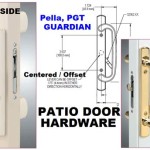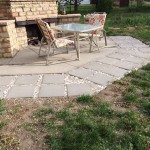```html
Four Seasons Courtyard Patio Heater: A Comprehensive Overview
The Four Seasons Courtyard Patio Heater represents a product line of outdoor heating solutions designed to extend the usability of patios, decks, and other outdoor spaces during colder months. These heaters are typically fueled by propane gas and are characterized by their various features, including adjustable heat output, safety mechanisms, and designs intended to complement outdoor decor.
Understanding the specifics and functionalities of Four Seasons Courtyard Patio Heaters is crucial for consumers considering purchasing one, as well as for retailers seeking to accurately represent the product line. This article aims to provide a comprehensive overview of these heaters, covering their key features, operational aspects, maintenance requirements, and safety considerations.
Key Features and Specifications
Four Seasons Courtyard Patio Heaters are available in different models, each with variations in specifications. However, several core features are commonly found across the product line.
Heat Output: Measured in British Thermal Units (BTUs), the heat output of a patio heater dictates its ability to warm a given area. Four Seasons Courtyard Patio Heaters typically offer adjustable heat output, ranging from lower settings for milder weather to higher settings for colder temperatures. A typical range might be from 30,000 to 48,000 BTUs. This adjustability allows users to customize the heat level according to their specific needs and the prevailing weather conditions.
Fuel Source: These heaters are primarily designed to operate on propane gas, commonly supplied in a standard 20-pound propane tank. Propane is a readily available and relatively clean-burning fuel source, making it a practical choice for outdoor heating. The propane tank is usually housed within the base of the heater, providing stability and concealing the tank from view.
Construction Materials: The construction materials of a patio heater are vital for its durability and weather resistance. Four Seasons Courtyard Patio Heaters often utilize a combination of steel, aluminum, and durable plastics. Steel components are typically powder-coated to resist rusting and corrosion, while aluminum is used for its lightweight and resistance to oxidation. The burner assembly is usually constructed from stainless steel for longevity and efficient heat production.
Safety Features: Safety is a paramount concern in the design of patio heaters. Four Seasons Courtyard Patio Heaters incorporate several safety features to prevent accidents and malfunctions. These features commonly include a tip-over shut-off valve, which automatically cuts off the gas supply if the heater is accidentally knocked over. Some models also include flame failure devices that shut off the gas if the flame is extinguished, preventing unburnt gas from accumulating. Additionally, safety screens or guards are typically included to prevent accidental contact with the hot burner area.
Design and Aesthetics: Patio heaters are often placed in visible areas of outdoor spaces, so their design and appearance are important considerations. Four Seasons Courtyard Patio Heaters are available in a variety of styles and finishes, including hammered bronze, stainless steel, and black. Some models feature decorative elements, such as lattice patterns or faux stone accents, to complement different outdoor decor styles. The overall design is intended to blend seamlessly with the surrounding environment while providing a functional heating solution.
Portability: While patio heaters are intended for stationary use, some degree of portability can be beneficial for repositioning the heater within a patio or deck. Many Four Seasons Courtyard Patio Heaters are equipped with wheels or casters, allowing for easy movement. The weight of the heater, especially with a full propane tank, can be significant, so wheels can greatly simplify repositioning.
Operational Aspects and Performance
Understanding how to operate and maintain a Four Seasons Courtyard Patio Heater is essential for ensuring its safe and efficient performance. The following section outlines the key operational aspects and performance considerations.
Assembly: Most Four Seasons Courtyard Patio Heaters require some assembly upon purchase. The assembly process typically involves attaching the burner assembly to the support pole, connecting the base, and installing the reflector shield. Clear and detailed assembly instructions are usually included with the heater. It is crucial to follow these instructions carefully to ensure proper and safe assembly. Improper assembly can compromise the heater's stability and safety features.
Ignition System: Four Seasons Courtyard Patio Heaters typically employ a push-button ignition system for easy and convenient lighting. This system usually consists of a spark generator that ignites the propane gas when the button is pressed. Some models may use a battery-powered ignition system, while others rely on a piezoelectric igniter. Ensuring that the ignition system is functioning correctly is essential for the heater to operate reliably.
Heat Distribution: The design of the heater's reflector shield plays a significant role in how effectively heat is distributed. The reflector shield is typically made of aluminum or stainless steel and is designed to direct the heat downwards and outwards. A well-designed reflector shield can significantly improve the heater's efficiency by concentrating the heat where it is needed most. The size and shape of the reflector shield can vary depending on the model of the heater.
Fuel Consumption: The fuel consumption of a patio heater is directly related to its heat output setting. Higher heat settings consume more propane than lower settings. A typical 20-pound propane tank can provide several hours of heating, depending on the heat setting and ambient temperature. Understanding the fuel consumption rate is important for planning propane refills and ensuring uninterrupted heating.
Effective Heating Area: The effective heating area of a patio heater depends on several factors, including the BTU output, the design of the reflector shield, and the ambient temperature. In general, a heater with a higher BTU output will be able to warm a larger area. However, the effectiveness of the heater can also be affected by wind and other environmental conditions. Manufacturers typically provide an estimated heating area for their patio heaters.
Wind Resistance: Patio heaters are often exposed to wind, which can significantly reduce their effectiveness. Wind can dissipate the heat and even extinguish the flame. Some Four Seasons Courtyard Patio Heaters are designed with features to improve their wind resistance, such as a weighted base or a wind guard. However, it is generally advisable to position the heater in a sheltered location to minimize the effects of wind.
Maintenance and Safety Considerations
Proper maintenance and adherence to safety guidelines are crucial for ensuring the longevity and safe operation of a Four Seasons Courtyard Patio Heater. The following section outlines the key maintenance requirements and safety considerations.
Regular Cleaning: Regular cleaning is essential for maintaining the performance and appearance of the heater. The burner assembly, reflector shield, and other components should be cleaned periodically to remove dust, debris, and cobwebs. A soft brush or cloth can be used to clean these parts. Avoid using abrasive cleaners or harsh chemicals, as they can damage the finish of the heater.
Gas Line Inspection: The gas line and regulator should be inspected regularly for leaks or damage. A simple way to check for leaks is to apply a soapy water solution to the connections and look for bubbles. If any leaks are detected, the gas line should be repaired or replaced immediately by a qualified technician. Damaged gas lines can pose a serious fire hazard.
Burner Inspection: The burner should be inspected regularly for corrosion or blockage. Corrosion can reduce the efficiency of the burner, while blockage can cause uneven burning or even extinguish the flame. The burner can be cleaned with a wire brush to remove any debris or corrosion. If the burner is severely damaged, it should be replaced.
Propane Tank Storage: Propane tanks should be stored in a well-ventilated area, away from direct sunlight and heat sources. Never store a propane tank indoors or in a confined space. When not in use, the propane tank should be disconnected from the heater and the valve should be closed tightly. Always follow the manufacturer's recommendations for storing propane tanks.
Clearance Requirements: Patio heaters require adequate clearance from combustible materials, such as walls, ceilings, and furniture. The manufacturer's instructions will specify the minimum clearance requirements. Failure to maintain adequate clearance can create a fire hazard. Ensure that the heater is positioned in a location where it will not come into contact with any combustible materials.
Carbon Monoxide Safety: Propane heaters, like all combustion appliances, produce carbon monoxide. While carbon monoxide poisoning is less of a concern in well-ventilated outdoor settings, it is still important to be aware of the risks. Never use a patio heater in an enclosed or poorly ventilated area. If you experience symptoms of carbon monoxide poisoning, such as headache, dizziness, or nausea, immediately move to fresh air and seek medical attention.
Supervision: Never leave a patio heater unattended while it is in operation. Children and pets should be supervised closely to prevent them from accidentally touching the hot surfaces of the heater or interfering with its operation. Always turn off the heater and allow it to cool down completely before leaving it unattended.
Professional Servicing: It is recommended to have the patio heater professionally serviced at least once a year by a qualified technician. A professional servicing can identify potential problems and ensure that the heater is operating safely and efficiently. This is especially important for older heaters or heaters that have been used extensively.
By understanding the features, operation, maintenance, and safety considerations outlined in this article, consumers can make informed decisions about purchasing and using Four Seasons Courtyard Patio Heaters, ensuring both comfort and safety in their outdoor spaces.
```
Four Seasons Courtyard Tabletop Gas Patio Outdoor Heater Gertens Garden Center

Four Seasons Courtyard 48 000 Btu Freestanding Outdoor Backyard Patio Heater 1 Piece King Soopers

Four Seasons Courtyard 40 000 Btu Steel Outdoor Patio Heater Broe Finish

Four Seasons Courtyard Inferno Radiant Gas Patio Heater Gertens Garden Center

Four Seasons Courtyard 10000btu Tabletop Gas Patio Heater Holds 1lb Propane Tank

Four Seasons Courtyard Outdoor Patio Heater Gertens Garden Center

Four Seasons Courtyard 40 000 Btu Steel Outdoor Patio Heater Broe Finish 1 Piece Fred Meyer

Four Seasons Courtyard 10000btu Tabletop Gas Patio Heater Holds 1lb Propane Tank 1 Piece Gerbes Super Markets

Four Seasons Courtyard 10000btu Tabletop Gas Patio Heater Holds 1lb Propane Tank 1 Piece Gerbes Super Markets

Four Seasons Courtyard 40 000 Btu Steel Outdoor Patio Heater Broe Finish








